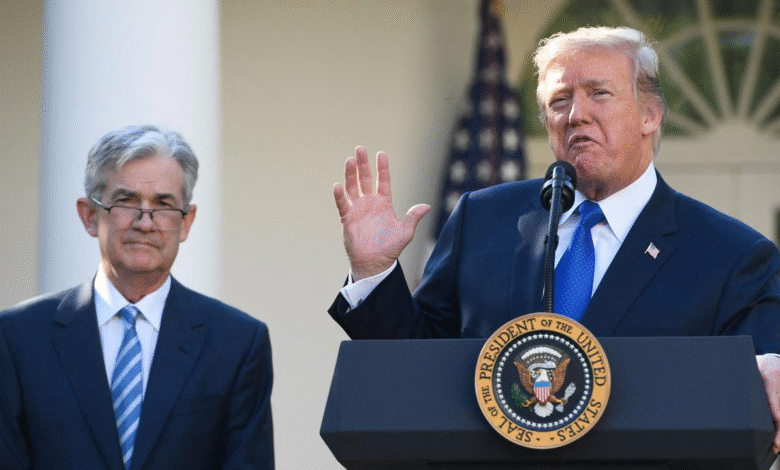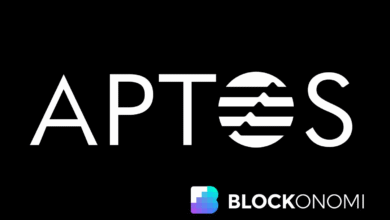Federal Reserve Interest Rate Cut: Schmid’s Hesitation

The recent discussions around a Federal Reserve interest rate cut have ignited significant anticipation among market watchers. Kansas City Fed President Jeffrey Schmid articulated his reservations about the likelihood of a September rate cut, highlighting the ongoing need to tackle inflation effectively. As a key member of the Federal Open Market Committee, Schmid is well aware of the delicate balancing act required to meet the Fed’s inflation target while navigating economic pressures. His caution resonates with the backdrop of heightened speculation, with markets estimating an 80% chance of a quarter-point reduction during the upcoming FOMC meeting. With external influences and political pressures mounting, the decision on whether to lower rates will hinge on robust economic data and nuanced discussions among policymakers.
In the world of economic strategy, conversations surrounding a potential reduction in interest rates by the Federal Reserve are crucial. The Kansas City Fed has emerged as a focal point in this dialogue, particularly with President Jeffrey Schmid’s insights regarding the need for cautious evaluation of inflation trends. Ahead of the anticipated FOMC meeting, where pivotal decisions will be made about the preferred monetary policy direction, experts and analysts alike are watching closely. Schmid’s sentiments reflect a broader skepticism towards making hasty policy adjustments, even as pressures from various stakeholders suggest that a September adjustment may be on the horizon. Understanding the implications of such financial maneuvers is vital for grasping how they can affect economic stimuli and market stability.
The Kansas City Fed’s Perspective on Interest Rates
Kansas City Federal Reserve President Jeffrey Schmid’s recent statements reflect a cautious stance on the widely anticipated interest rate cut in September. Despite market speculation suggesting a nearly 80% probability of a quarter percentage point reduction at the upcoming Federal Open Market Committee (FOMC) meeting, Schmid emphasized that more robust data is necessary before making any policy decisions. He articulated a commitment to thoroughly assess the economic landscape, suggesting that the Fed is at a pivotal moment where critical decisions hinge on further inflation insights.
Schmid’s insistence on a careful evaluation of inflation resonates deeply within the Federal Reserve’s framework. His recognition of the challenges in stabilizing inflation near the 2% target indicates a nuanced approach to monetary policy. As the president of the Kansas City Fed, Schmid’s cautious remarks underscore a broader consideration among FOMC members about the economic indicators that will guide their forthcoming decisions. The Fed’s historical role as a stabilizing force carries significant weight, especially amidst fluctuating economic conditions.
Preparing for the September Rate Cut: Economic Indicators to Watch
As the Federal Reserve approaches its September meeting, crucial economic indicators will be scrutinized to determine the viability of an interest rate cut. Jeffrey Schmid emphasized the importance of definitive data before any shifts in policy, a sentiment widely echoed by other FOMC members. Factors such as current inflation rates, employment statistics, and overall economic growth will play pivotal roles in shaping the Fed’s decisions. Markets are anxiously awaiting to see if the anticipated changes in monetary policy will align with the current economic narrative.
The convergence of inflation concerns and unemployment dynamics reveals a complex economic landscape for policymakers. With the Kansas City Fed’s annual symposium in Jackson Hole as a backdrop, discussions around potential rate adjustments underscore the intricacies related to achieving the inflation target. Schmid’s acknowledgment of the challenges posed to controlling inflation reflects an understanding that the last stretch toward stability can indeed be strenuous. With the Fed under immense scrutiny, stakeholders are closely monitoring how these economic signals will dictate their course amid shifting political pressures.
Political Influences on Federal Reserve Decisions
The Federal Reserve’s independence is often tested by external political pressures, as evidenced by President Trump’s recent calls for interest rate cuts. The narrative surrounding tariffs and inflation has intensified, with calls from the White House asserting that the Fed’s decision to lower rates is crucial for stimulating economic growth. This external pressure complicates the Fed’s ability to adhere strictly to data-driven policymaking, as illustrated by Schmid’s nuanced responses to these political influences.
With Schmid standing firm on the need for solid data before honoring these political requests, it becomes apparent that the Fed is committed to maintaining its integrity amid external pressures. The ongoing discourse surrounding the central bank’s role emphasizes both the necessity of an informed public and the intricate relationship between monetary policy and political dynamics. As such, FOMC members like Schmid serve not only to guide monetary policy but also to educate the public on the intricacies of how decisions are made in the face of political dissent.
The Inflation Target: Challenges Ahead for the Fed
Schmid’s remarks on the challenges of reaching the 2% inflation target shed light on the Fed’s ongoing mission to foster economic stability while addressing inflation. He highlighted his belief that inflation could be closer to three than to two, which paints a challenging picture for policymakers as they navigate complex economic signals. The interplay between rising inflation and the Fed’s goals highlights the crucial decisions ahead concerning rate adjustments.
Understanding the significance of the inflation target within the context of Schmid’s statements is essential for comprehending the Fed’s strategic approach. As key economic indicators fluctuate, the challenge lies in balancing economic growth with inflation control. Schmid’s insights reflect a broader caution among the FOMC about making premature decisions without the assurance of sustainable inflation metrics, reaffirming the Fed’s commitment to sound economic stewardship.
FOMC Meeting Insights: Key Takeaways
The impending FOMC meeting in September promises to be a crucial juncture for the Federal Reserve’s policy direction. With increasing speculation surrounding a possible interest rate cut, Jeffrey Schmid’s cautious outlook serves as a counterpoint to the prevailing market expectations. The deliberations within this meeting will likely address not just potential cuts, but also the broader implications of inflation data and employment reports on future monetary policy.
In light of the discussions expected to unfold during the FOMC meeting, attention to the indicators that inform rate decisions becomes paramount. Schmid’s insistence on waiting for definitive economic data reflects a careful balance between reacting to market pressures and staying true to measured economic analysis. As policymakers assess these critical data points, the outcomes of the meeting could set the tone for how the Fed navigates the challenging waters of inflation control and economic growth.
Impact of External Factors on Federal Reserve Policies
External factors, such as geopolitical events and domestic political pressures, can significantly impact Federal Reserve policies. Schmid’s perspective on the interplay between these external elements and the Fed’s decision-making process emphasizes the complexity of modern monetary policy. With politicians like President Trump exerting influence for lower rates, the Fed must discern the economic implications of such pressures while upholding its mandate.
The potential conflicts between political aims and economic realities emphasize the delicate balance the Fed must maintain. Schmid’s remarks reflect a commitment to a data-driven approach, despite the challenges posed by external influences. This highlights the need for the Federal Reserve to articulate its mission clearly, ensuring that the public and markets understand that monetary policy must be based on sound economic principles rather than political expediency.
Role of the Kansas City Fed in National Monetary Policy
The Kansas City Federal Reserve plays a pivotal role in shaping national monetary policy through its annual symposium and participation in FOMC meetings. Jeffrey Schmid’s position not only signifies his influence within these discussions but also underscores the importance of regional perspectives in determining interest rates. The Kansas City Fed’s contributions highlight the diverse economic conditions and challenges facing different areas of the United States.
In the context of the national economy, Schmid’s evaluations provide necessary insights into how inflation and employment issues are affecting local economies. As he navigates discussions influenced by both data and political pressures, the Kansas City Fed exemplifies how regional Federal Reserve Banks contribute to the overarching goals of the central bank. This balance of local and national perspectives is crucial for effective monetary policy implementation.
Jeffrey Schmid’s Vision for the Federal Reserve
Jeffrey Schmid’s leadership at the Kansas City Fed reflects a vision grounded in data analysis and economic responsibility. His cautious approach towards potential rate cuts indicates a commitment to ensuring that monetary policy decisions are well-informed and sustainable. By advocating for thorough evaluations of economic indicators before adjusting interest rates, Schmid reinforces the importance of responsible fiscal stewardship within the Federal Reserve.
As Schmid contemplates the challenges the Fed faces in reaching its inflation targets and managing external pressures, his perspective offers a roadmap for thoughtful leadership. His understanding of the complexities surrounding inflation and interest rates positions him as a central figure in shaping the future trajectory of Federal Reserve policies. Through his insights, Schmid contributes significantly to the broader dialogue about the Fed’s role in the economy and the challenges of maintaining stability in fluctuating financial landscapes.
Looking Ahead: What to Expect from the Federal Reserve
As the Federal Reserve approaches the pivotal FOMC meeting, the insights shared by Schmid provide valuable guidance on what to anticipate in terms of monetary policy. With inflation concerns at the forefront of discussions, the potential for interest rate cuts hinges on the emerging economic data leading up to the meeting. The commitment to a data-driven approach suggests that decisions will align closely with the current economic climate.
The broader implications of the Fed’s decisions extend beyond immediate interest rates, affecting everything from consumer confidence to business investments. As Schmid navigates these complexities, upcoming announcements will be closely monitored by markets, policymakers, and economic analysts alike. With the potential for significant shifts in monetary policy, both the Kansas City Fed and the national economy may be embarking on a critical transitional phase in the near future.
Frequently Asked Questions
What is the significance of the Kansas City Fed’s stance on the September interest rate cut?
The Kansas City Fed’s Jeffrey Schmid expressed skepticism about a widely anticipated interest rate cut in September. His caution suggests that the Federal Open Market Committee (FOMC) may need more definitive data on inflation before making adjustments to its key borrowing rate. This stance reflects the ongoing challenges the Fed faces in achieving its inflation target.
How does Jeffrey Schmid’s view on the September interest rate cut affect market expectations?
Jeffrey Schmid’s hesitance regarding the September interest rate cut is significant as it contrasts with market expectations, which show an approximately 80% chance of a quarter-point reduction. His comments emphasize the need for careful analysis before altering monetary policy, suggesting that the FOMC may prioritize inflation data over immediate market pressures.
What challenges is the Federal Reserve facing with its inflation target?
The Federal Reserve, particularly under the insights of Kansas City Fed President Jeffrey Schmid, is grappling with significant challenges in meeting its inflation target of 2%. Schmid highlighted that current inflation may be closer to 3%, indicating that achieving the target will require substantial effort and caution in policy decisions, including any potential interest rate cuts.
How does the Federal Reserve’s policy influence the housing market?
Interest rate cuts by the Federal Reserve, as advocated by officials including President Trump, are intended to stimulate the housing market by lowering borrowing costs. However, the Kansas City Fed’s Jeffrey Schmid cautioned that any rate cut must be balanced against ongoing inflation concerns to ensure that economic stability is not compromised.
What role does Jeffrey Schmid play in the FOMC’s decision-making process regarding interest rates?
Jeffrey Schmid serves as a voting member of the Federal Open Market Committee (FOMC), which is responsible for setting interest rates. His insights and judgments on monetary policy, particularly regarding potential interest rate cuts, will have a significant impact on the FOMC’s decisions during meetings such as the one scheduled for September.
How do political pressures affect the Federal Reserve’s decision on interest rates?
Political pressures, including calls from President Trump for lower interest rates, complicate the Federal Reserve’s decision-making process. While the Fed aims to remain independent, pressures can influence public perception and the urgency with which the FOMC approaches rate cuts, as reflected in the recent discussions led by Jeffrey Schmid.
What expectations do markets have for the Federal Reserve’s upcoming FOMC meeting in September?
Markets currently anticipate a strong likelihood of a quarter-point interest rate cut during the Federal Reserve’s FOMC meeting on September 16-17. However, Jeffrey Schmid’s cautious perspective suggests that the committee will consider all relevant economic data and inflation trends before confirming any adjustments to rates.
| Key Points | Details | |
|---|---|---|
| Kansas City Fed’s Stance on Interest Rates | Kansas City Federal Reserve President Jeffrey Schmid has expressed hesitation regarding a rate cut in September, emphasizing that more work is needed on inflation. | |
| Market Predictions | Market expectations indicate a nearly 80% chance that the Fed will cut rates by a quarter percentage point in mid-September. | |
| Political Pressure | There is significant pressure from the White House, including President Trump, to cut interest rates for stimulating economic growth. | |
| Inflation Concerns | Schmid stated that achieving the Fed’s 2% inflation target remains challenging, indicating inflation might be closer to 3%. | |
| Upcoming Discussions | Discussions regarding interest rates will continue during the upcoming FOMC meetings, where collaborative decisions will be made based on definitive data. | |
Summary
The potential for a Federal Reserve interest rate cut has been a hot topic among economists and market participants alike. As highlighted by Kansas City Fed President Jeffrey Schmid, there are significant concerns about the current inflation rate which seems to linger closer to 3%, above the Fed’s target of 2%. Schmid’s cautious approach indicates that, despite market predictions leaning towards a September rate cut, the Federal Reserve may hold off until clearer data emerges. This hesitation reflects broader economic complexities and pressures from political figures, underscoring the importance of careful decision-making in monetary policy.




